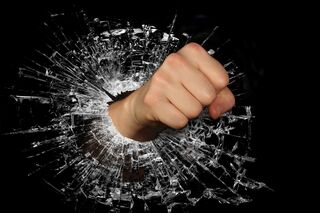Bullying
How Hating Hurts You
Self-flagellation and re-traumatization.
Posted June 20, 2022 Reviewed by Jessica Schrader
Key points
- Passionate hate is unhealthy for the hater.
- Hate prevents the healing of the wounds that created the hate.
- Healing from past hurts involves learning how to accept and grow from painful experiences.
Hate is an intense and passionate dislike of someone or something that has caused harm or that threatens to cause harm. Many people who experience hate dwell on the source of the feeling by obsessively reviewing hurtful or threatening influences. The sometimes-constant review of these hurts or threats causes a re-experiencing of the pain, fear, intimidation, etc., which prevents healing from these experiences. Focusing on healing from past hurts, rather than reliving them, will bring a greater sense of well-being and mental health.

Many individuals who have been hurt or threatened experience hate towards the perceived source of the pain. Many of these individuals maintain or increase the intensity of these feelings by reviewing or ruminating over painful experiences. This can take the form of “triggering,” by reviewing reminders of the hurt. This could include seeking objects that were used to cause hurt, pictures or other items that represent the source of the hate, as well as seeking revenge for the hurt or exposing it to others.
When the source of the hate is not traumatic, this is a form of self-flagellation. Similar to a physical wound, emotional wounds need to be protected so that they can heal. Ruminating over past hurts is like scratching the scab off of a wound before it heals, which refreshes the wound, often restarting the bleeding.
When the source of the hate is traumatic, the reviewing or “triggering” causes re-traumatization, resulting in a deepening of the traumatic wound. This can significantly increase post-traumatic stress symptoms, such as panic attacks and intrusive recollections, including recurrent nightmares.
Bennie’s Story
Bennie’s life was unremarkable until he went to middle school. When he entered seventh grade, he inadvertently drew the attention of some boys who grew up together in another part of town. Bennie spent most of his seventh-grade year trying to deal with bullying. The other boys were relentless. They humiliated him publicly, they bad-mouthed him on social media, and they played hurtful tricks on him like stealing his books or putting feces in his shoes while he showered in the locker room.
The bullying ended only after he was transferred to a different middle school for eighth grade. The experience left him hurt and angry from his experience even after the bullying stopped. The anger turned to hate. He thought about those boys every day and had fantasies about how he would get back at them. He would set up empty bottles and cans and label each one with the name of his enemies. He would then shoot his slingshot at the bottles and cans and sometimes just knocked them over and broke them aggressively. He stalked the boys on social media and sometimes walked by their houses to see what they were doing.
The fantasies of revenge and the stalking of the boys stoked his anger and made him feel like he was powerful. This felt better than feeling weak and beaten down, but it also revived all the pain he experienced each time he was bullied. Some days this is all he thought about.
Bennie graduated high school and went to college, but he still thought about the bullying daily and he still tracked his enemies. He still entertained fantasies about revenge. He was uncomfortable with other students throughout high school and into college. He felt anxious around other students, particularly males. He didn’t trust them and avoided group activities. He felt awkward and excluded, even though there was no bullying at college.
Bennie’s stoking the flames of his anger and hate by reviewing and reliving them daily kept him feeling like the victim that he was in eighth grade. He felt isolated and alienated from his peers. He did not realize that this feeling at school came from his keeping alive the bullying that occurred many years before. Bennie was stuck emotionally.
Healing and Growth
In order for Bennie to heal, he has to let go of what happened in the past and grow from it. He must accept that it did happen but that it is not happening anymore. Focusing on compassion (but not pity) about how he was hurt will help him heal. Recognizing the strength and knowledge that he got from surviving the situation will help him grow. It will allow him to see his symptoms as coping mechanisms and he will no longer resent them. For example, he can transition from his sense of being a helpless victim of bullying needing to avoid bullying situations, to a person who has learned how to identify and deal with bullying today by choosing relationships with healthy individuals and refusing to engage with bullies.
We can heal emotionally the same way we can heal physically. We have to protect our wounds so that they can heal and not scratch at the scabs, which retards healing. Once healing has occurred, then we can become stronger through growth that can occur only after we see the hurtful experiences as having occurred and ended rather than being ongoing. This can only occur after you stop the self-flagellation and re-traumatization.




